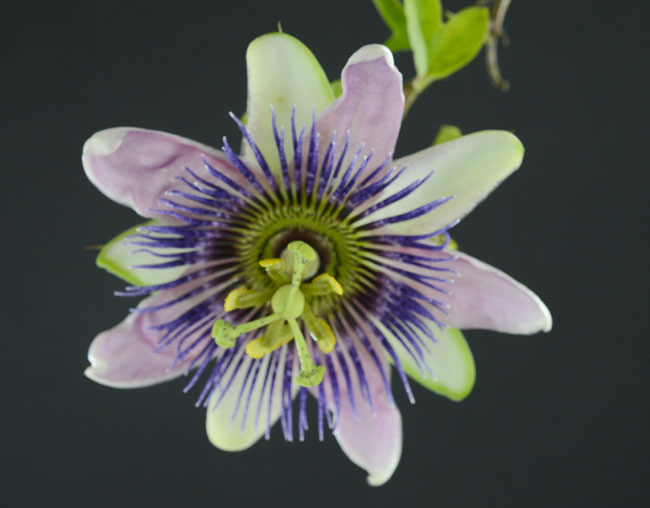The Passion flowers and its mysteries
The genera Passiflora, known commonly as the passionflower. Known by Native Americans since before the time of the Spanish conquest by other names. The first Spanish explorers did not know these plants and began to call "passion fruit" because its fruit reminded them of pomegranate (Punica granatum), a European species. Shortly after, the same Spanish (especially the Catholic missionaries), aided by creative and amazing imagination, suggested that the forms and structures of the flowers were a representation of the passion and suffering of Christ. This religious symbolism was spread over time, until in 1737 the famous Swedish scientist Carl Linnaeus decided to use as Passiflora genera name (Tillet 1988 Kugler & King 2004).
According to the religious interpretation of the flower, each party represents some aspect of the crucifixion of Christ:
- The crown of filaments: the crown of thorns
- The three styles and stigmas: the three nails
- The androgynophore: flogging column
- The five stamens: the five wounds of Christ on the cross
- Leaves: the spears which pierced the side
- The glands of the leaves: the 30 pieces of silver that Judas received for betraying Jesus.
Passiflora lingularis, Granadilla
Over time you were adding other aspects and interpretations of history.
These flowers are found in warmer areas, mostly tropics, throughout the world. Passionflower extracts have been classified into several categories of chemical activity: anxiolytic, spasmolytic, hypnotic, sedative, narcotic and anodyne (Ozarko 2001).
In a field expedition, when I was looking species of passionflower, a farmer told me that when people have insomnia uses flowers to sleep. Other people use the flowers in tea or soup to reduce stress and to sleep for many hours without being interrupted.
On this trip I had the opportunity to see P. quadrangularis and P. ligularis in wildlife because we are informally cooperating with Armando Caceres, author of medicinal plants of Guatemala and he provided where the plants are.
Importantly, many pasiflora species growing on non-native Guatemala. For example we have in our garden four species of Passiflora and none is native to Guatemala, belonging to South America.
MacDougal, J. M.
1983 Revision of Passiflora L. section Pseudodysosmia (Harms) Killip emend. J.
MacDougal, the hooked trichome group (Passifloraceae). Ph.D. dissertation, Duke University, Durham, North Carolina
Ozarko, G.
2001. Passiflora. http://www.ion.com.au/~iridology/Passiflora.html
Posted April 2014














































































